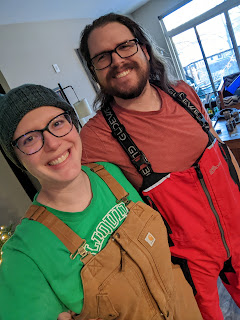A sleep-in day, hooray! We needed it though, because we walked another 8 miles today. Our day began with a bus tour around Vienna and a walk around the Belvedere gardens. Imagine the time is 1683; the place is Vienna; the antagonists hail from the Ottoman Empire. You're Prince Eugene of Savoy, a military man loyal to the Habsburgs, so you get crafty and save the city of Vienna from the Ottomans' months-long siege. You're pretty pleased with yourself, so you decide to build a palatial complex in just 2 years...and to rub it in, you make sure the roof line looks like the tents of the Ottomans you've defeated! Interestingly, Vienna kept Turkish coffee around after the siege broke
and their bakers invented the croissant, which is shaped like the half-moon of the Ottoman flag.
 |
| Upper Belvedere from the gardens |
 |
| Sphinxes represent both mental and physical strength, as was shown in breaking the siege of Vienna |
On to Sc
hönbrunn Palace! This was the summer country residence of the imperial Habsburg family in Vienna. The palace was originally a mansion from the 1500s, but the empress Maria Theresa (the only female ruler of the Habsburgs) rebuilt it in its current form in the 1740-50s. When the monarchy fell in 1918, the palace was preserved by the government as a museum. Sch
önbrunn boasts the oldest zoo in the world; a hedge maze; impressive gardens; an imperial forest still full of deer and wild boar; and grounds totaling an area bigger than the country of Monaco. Its mere 1,441 rooms pale in comparison to the Habsburgs' main residence in the city, but they are decorated in a variety of unbelievable fashions - most rooms are lavishly filled with carved wood chandeliers and moulding that was then all painted with gold foil. No pics inside...but outside was cool!
 |
| The palace's central structure from the front gates. There are wings on either side I didn't capture. |
 |
| Backside of the same building, viewed from the public gardens |
 |
| Looking away from the palace across the gardens is a beautiful fountain and the Gloriette on the far hill |
 |
| Dexter! When will the rampage end?? |
After this, the rest of the day was free! In true Tushaus fashion, we set out to explore the city by foot. Our first stop was the main imperial residence, Hofburg Palace, close to the old city center, specifically the Augustinerkirche and the Austrian National Library. The Augustinerkirche was the parish church of the imperial palace and opened in 1339 (it was integrated into the palace after it was built). This year the Austrian National Library celebrates its 650th birthday with a special anniversary exhibit that includes the manuscript that started it all! In 1368, the Johannes von Troppau Evangeliary, filled with gold lettering and magnificent illustrations, was completed and became the foundation of the Library.
 |
| Augustinerkirche's organ |
 |
| The sanctuary. I have never seen chandeliers in churches so often as I have on this trip! |
 |
| The Austrian National Library contains works and items collected by lots of important Austrians (like Eugene of Savoy) over the years. The exhibits we saw included both ancient books and things like a neat cartography exhibit. |
 |
| It's also decorated beautifully! |
It was raining at this point, but we were already out and about so we just kept going. As Rebecca said, "you can't swing a cat without hitting a church around here!" And hit a church we did - we stumbled upon St. Michael's Church, one of Vienna's oldest churches, which is dedicated to the Archangel Michael. Though it was consecrated in 1217, its high altar was designed in 1781, as was the work in the background. St. Michael's contains the largest playable Baroque organ in Austria, as well as many gravestones from earlier times. The oldest in the church is from 1341!
 |
| St. Michael's organ |
 |
| I loved this unique design! |
 |
| A family chapel with the oldest altar in the church |
 |
| The oldest stone in the church, from 1341 |
Finally, we made it to Votivkirche. Consecrated in 1879, Votivkirche was established following a design competition and has two 99-ft tall lacy steeples. When we first walked in I didn't think quite as much of this church as the others. However, the longer I was inside, the more detail I noticed about this incredible structure. Enjoy the pictures and have a lovely night! Tomorrow we sing!






















Comments
Post a Comment